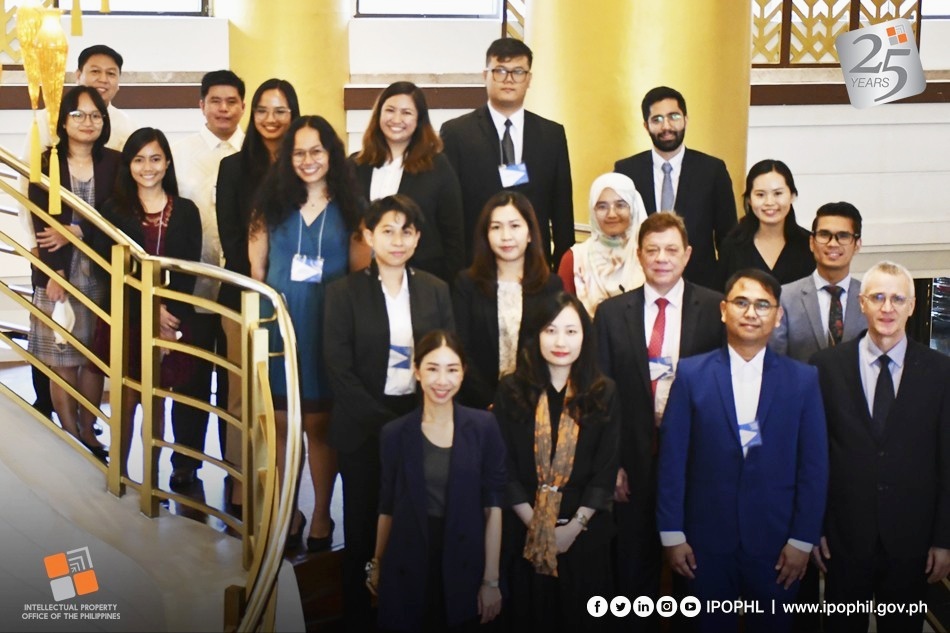The Bureau of Copyright and Related Rights (BCRR) recently helped advance the ASEAN Creative Information Network (ACIN) Project, which aims to create a central database for copyright information across ASEAN.
Recently, the ASEAN Working Group on Intellectual Property Cooperation (AWGIPC) held a workshop that gathered creative industry players, who gained insights from copyright specialists and experts on the key metrics and methodologies needed to collate and organize data on copyright and the creative economy.
The workshop figures in the ACIN Project’s ultimate goal of launching a website that will provide all the latest economic and legislative data and information about copyright and the creative economy in the ASEAN. The ACIN website aims to simplify policymakers, researchers and businesses’ access to copyright data in the region and allow easier benchmarking and tracking of creative industries’ growth.
The workshop is a result of the collaboration between the Intellectual Property Office of the Philippines (IPOPHL) as AWGIPC Chair, the ASEAN Secretariat and the World Intellectual Property Organization (WIPO).
During the workshop,WIPO Deputy Director and Senior Manager, Information and Digital Outreach Division, Copyright and Creative Industries Sector Dimiter Gantchev emphasized the importance of uncovering creative economy statistics.
“The results of this study are going to be beneficial to the fabrics of the economy and the creators. Through the study, local creatives will be able to see their contribution to the economy as they represent such a high percentage of the employment in the Philippines. They will understand that they contribute so much to economic growth. And at the end of the day, it will have a very positive impact on the competitiveness of the Filipino economy, on the GDP, per capita, government efficiency and innovation capacity,” Gantchev said.
Gantchev points out that, according to the most recent available WIPO study published through “The Economic Contributions of Copyright Industries,” 14.4% of the Filipino workforce is employed in the creative industries. However, implications of the recent global pandemic calls for more countries to update their data.
“The available copyright registration and other related statistical information among the AMS leave much to be desired,” BCRR Director Emerson G. Cuyo said. “We welcome the cooperation of IPOPHL’s closest partners – WIPO and the ASEAN Secretariat – to strengthen copyright knowledge, monitor industry growth, build stakeholder-relevant policies and foster healthy creative industry competition among our neighbor countries,” he added.
The data gathering learning session was attended by national IP representatives from other AMS members, namely Brunei, Cambodia, Indonesia, Malaysia, Singapore, Thailand and Vietnam. Representatives from the Philippine Statistics Authority and the Department of Trade and Industry were present as the primary data gathering offices for the local creative industry.
“GDP, Gross Value Added, employment percentage, and foreign trade or value of imports and exports are essential in capturing the economic significance of copyright,” Rimantas Vaicenavičius, Statistical Expert on Methods and Quality, said,emphasizing the statistical indicators essential in supporting policy-crafting.
According to the latest WIPO estimates, local creative industries contribute 7.34% to Philippine GDP. The Philippines has yet to determine the copyright-based industry’s value over the pandemic but expects that numbers have diminished over the past two years due to the crisis.
Following the capacity building of statistics experts, IPOPHL will be closely working with the ASEAN, WIPO, and the AMS for an official data gathering and research activity that will pave the way for the launch of the ACIN website by 2023. With the aid of DTI and PSA, IPOPHL expects to update the numbers.
As part of the ACIN project, the BCRR also gathered this year the latest copyright and creative industry-related laws of the 10 AMS to be uploaded to the upcoming ACIN website and will be made available in English.
The ACIN Project helps fulfill President Ferdinand Marcos, Jr.’s commitment to support the Philippine creative industries. In his first state of the nation address, the president emphasized the urgency of protecting the creatives who “give soul to the Filipino identity.”
“IPOPHL remains firmly committed to upholding the recently passed Creative Industries Development Act. As part of the Creative Industry Development Council, the office aims to intensify coordination with partners and stakeholders of the creative sector and contribute to a holistic statistical approach in enabling the recovery of the creative economy,” Cuyo added.














